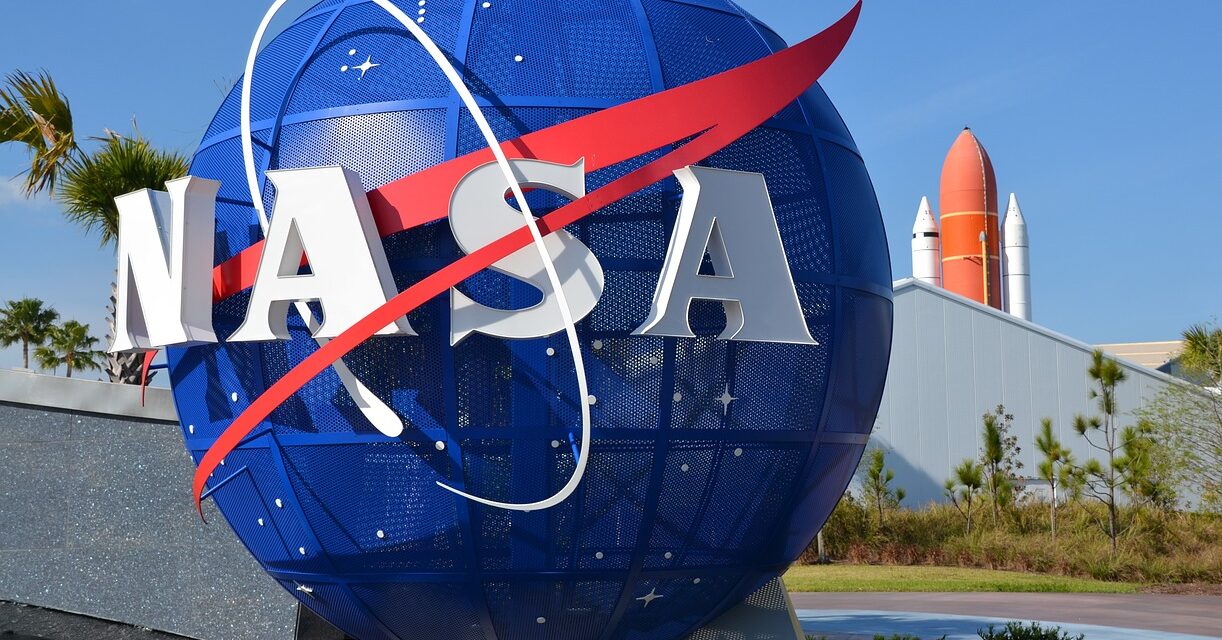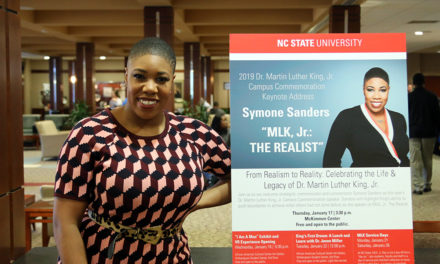On Thursday, Sept. 23, UAB, in Collaboration with The National Society of Black Physicists (NSBP) and Women in Physics (WIP), put on a program titled Hidden Figures Night. During Hidden Figures Night, students had the opportunity to explore and engage with the clubs tabling at the event. Representatives from The National Society of Black Physicists, Women in Physics, Women in Science and Engineering Village, and Women in Mechanical and Aerospace (WIMA) all came and tabled at this event. During the tabling portion of the event Nubian Message got a chance to talk with some of the representatives from these organizations about the importance of this event:
Nubian Message: What did you want people to get out of this event?
Trinity Taylor, the president of NSBP said, “I would like people to know about our clubs and that they exist, because I feel like not many people know about NSBP, people might also not know about Women in Physics, especially Black students and women in physics. It can be really stressful for [those],who haven’t found [these] communities yet, and this could provide some relief for them. I’d also like the community as a whole to be able to learn about the experience of minorities in STEM fields and to learn about how it can be challenging.”
Nora Sayeed, the co-president of WIMA said, ‘I want to spread more awareness about women in the Mechanical and Aerospace Engineering community. I want people to feel included if they do decide to pursue a Mechanical or Aerospace major.”
Ayesha Darekar the president of WIP said, “I wanted to spread awareness about [WIP], possibly recruit new members as well, and educate people about the physics department and what we do, and let people know that you do not have to be a physics major to join our club. As well as spreading awareness about diversity in STEM and how that is incredibly important, it’s nice to be able to celebrate it through this event and showcase accomplishments that women and minorities have done in the STEM fields.”
Thusna Gardiyehewa the P.A.C.K. Chair said, “[UAB] wanted people to know that there are many resources at NC State to help guide them and lead them to be successful in their future STEM career plans. And truly, to take away that anything is possible.”
The importance of spreading awareness about these communities of Black students, especially women in STEM and various clubs and resources available for them on campus, is more important than ever. Over the past decade, the percentage of Black students at NC State has dropped to 6.5%, this equates to only 2,399 Black undergraduate students on a campus of 36,831. An even smaller percentage of these students are STEM majors on campus.
UAB played Hidden Figures during this event. This movie tells the story of three Black NASA mathematicians: Katherine G. Johnson, Dorothy Vaughan and Mary Jackson. It shows the struggles they went through working at NASA during a time where Black people were still legally segregated. The movie also shows their triumphs and great accomplishments and their contributions to the field of mathematics and science.
One notable scene and milestone for Black women was when Mary Jackson was granted permission by the courts to attend an all-white high school to take all of the necessary coursework to become an engineer at NASA. She went on to become NASA’s first female engineer in 1958. Another notable scene in the movie was when Mrs. Mitchell, the superintendent of the all white east computing group, gave Dorothy Vaughan the job application to become the supervisor of the west computing group. In 1948, Vaughan became NASA’s first Black supervisor and went on to become an expert in Fortran, a computer software language. These hidden figures were highly important in the success of NASA’s missions to send a person to space and later to the moon.
Katharine Johnson’s accomplishments were highlighted in many ways during the film. One of these accomplishments was when she created the math to find the “g o no go point” for the launch and return of the Freedom 7, the spacecraft that made Alan Shepard Jr. the first US astronaut in space, in 1961. She then went on to be the first Black woman to be credited as an author of a research report and co-authored 26 research reports before her retirement in 1986.
After the movie there was a discussion based on previously created questions provided by UAB and the other collaborating organizations. They discussed the progressiveness of NASA at the time based on what was seen in the movie. It was seen that NASA was not as progressive as they were portrayed to be, they were “only progressive when it benefited them”, said Trinity Taylor, a sophomore physics major.
This faux progressivism was seen countless times during the movie, examples being when they tore down the colored bathrooms, only because they wanted Katherine Johnson to not spend as much time traveling back and forth to the other campus just to be able to use the bathroom. NASA had to adapt to inclusivity because they realized that segregation was not working in favor of their progression in mathematics and physics.
As seen in the movie Black people were often the only ones in the rooms or their specific groups, we also can relate to this now on campus in our classrooms. We discussed how being the only women of color in our classes felt like “all eyes [were] on us” and how we feel like we“ have to prove [ourselves] even more” just to feel like we belong in the rooms”, said Zion Pittman, a freshman in Fashion and Textile Management.
Some of us felt “scared to raise our hands [in classes because we] could get it wrong and [we] don’t want others to think that it’s because [we are] women”- Ayesha Darekar, a sophomore majoring in physics and statistics.
Nubian Message interviewed Thusna Gardiyehewa, the PACK chair for the Universities Activities Board, who was the head organizer for this event.
NM: What does being a woman in STEM mean to you?
Thusna Gardiyehewa: To me, being a woman in STEM means to look beyond — to see past what meets the eye, and to dedicate myself to thinking about complex problems that may remain unsolved. It means looking to a future where we will work toward solutions that lead to bettering our world. Being a woman in STEM means standing on the shoulders of giants and contributing to the groundwork that will support many generations to come.
NM: What did you want people to get out of this event?
TG: We wanted people to know that there are many resources at NC State to help guide them to being successful in their future STEM career plans. And, truly, to take away that anything is possible.
NM: What organizations did you collaborate with and why?
TG: This event was a collaboration between Women in Physics, the National Society of Black Physicists, and UAB. It is important to work alongside groups that have valuable insights into the topic at hand, and we must ensure that their voices are heard.
This event was for women of color to see some of the different campus organizations here to support them. As well as for them to gain community by watching a movie where we see women, who look like us, face disparities in their communities that we can still see today. Especially in our courses at a predominantly white institution.




